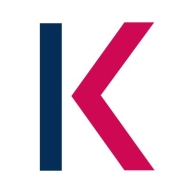

Knowage and Teradata are competing in the business intelligence and analytics market. Knowage has the upper hand in pricing and customer flexibility, while Teradata leads in high-performance features.
Features: Knowage provides open-source customization, integration capabilities with various data sources, real-time analysis, and multilingual support. Teradata offers high-performance analytics, scalable data warehousing, and extensive multi-terabyte processing.
Room for Improvement: Knowage could enhance advanced analytics features and increase scalability options. It also faces challenges with real-time data handling for larger datasets. Teradata needs to simplify its deployment process, reduce initial setup costs, and make its system more intuitive for users without technical expertise.
Ease of Deployment and Customer Service: Knowage features straightforward server-based deployment supporting various environments and offers assistance via community forums. Teradata uses a complex cloud and on-premise hybrid model, requiring significant setup but providing dedicated technical support.
Pricing and ROI: Knowage is cost-effective with lower upfront costs and favorable ROI, suitable for small to medium enterprises. Teradata requires higher investment but delivers substantial returns for large-scale operations due to its high performance.

Knowage (formerly SpagoBI) has a 14-years history. The actual release is the 6.3.
Knowage offers FULL ANALYTICAL CAPABILITIES, with a special focus on big data analytics and comprehensive support to rich and multi-source data analysis. Knowage provides different modules, each one focused on a specific domain but mutually combinable (Big Data, Smart Intelligence, Enterprise Reporting, Location Intelligence, Performance Management, Predictive Analysis). Moreover, Knowage is an OPEN SOURCE solution: the source code is freely accessible, everyone is allowed to join the community and build the own business solution to ensure strategic decision-making and improved productivity.
Knowage suite is supported by Engineering Group, the leading Italian software and services company, with about 10,000 people and more than 50 offices worldwide. Maintenance and support services (such as trainings, migration support, proof-of-concepts, etc) are provided by Engineering Group (KNOWAGE Labs) under subscription.
Teradata is a scalable data analytics platform designed to meet enterprise demands for large-scale data management and processing, focusing on performance, scalability, and security for complex query executions.
As a leading data warehousing solution, Teradata integrates advanced analytics enabling organizations to derive insights from massive datasets. It supports high-volume data workloads with its architecture optimized for analytical queries. Users benefit from its robust scalability, allowing seamless expansion as data grows. Teradata's SQL engine is compatible with a wide range of data types, ensuring flexibility in data analysis. With advanced security measures, it protects sensitive data across various environments, providing peace of mind to users handling critical information.
What are the most important features of Teradata?Teradata is widely used in industries like finance, telecommunications, and healthcare, where data-driven decisions are critical. Companies leverage its robust analytics capabilities to enhance customer experiences, streamline operations, and ensure compliance with regulatory requirements. In these sectors, quick access to data insights can significantly impact competitive advantage.
We monitor all BI (Business Intelligence) Tools reviews to prevent fraudulent reviews and keep review quality high. We do not post reviews by company employees or direct competitors. We validate each review for authenticity via cross-reference with LinkedIn, and personal follow-up with the reviewer when necessary.